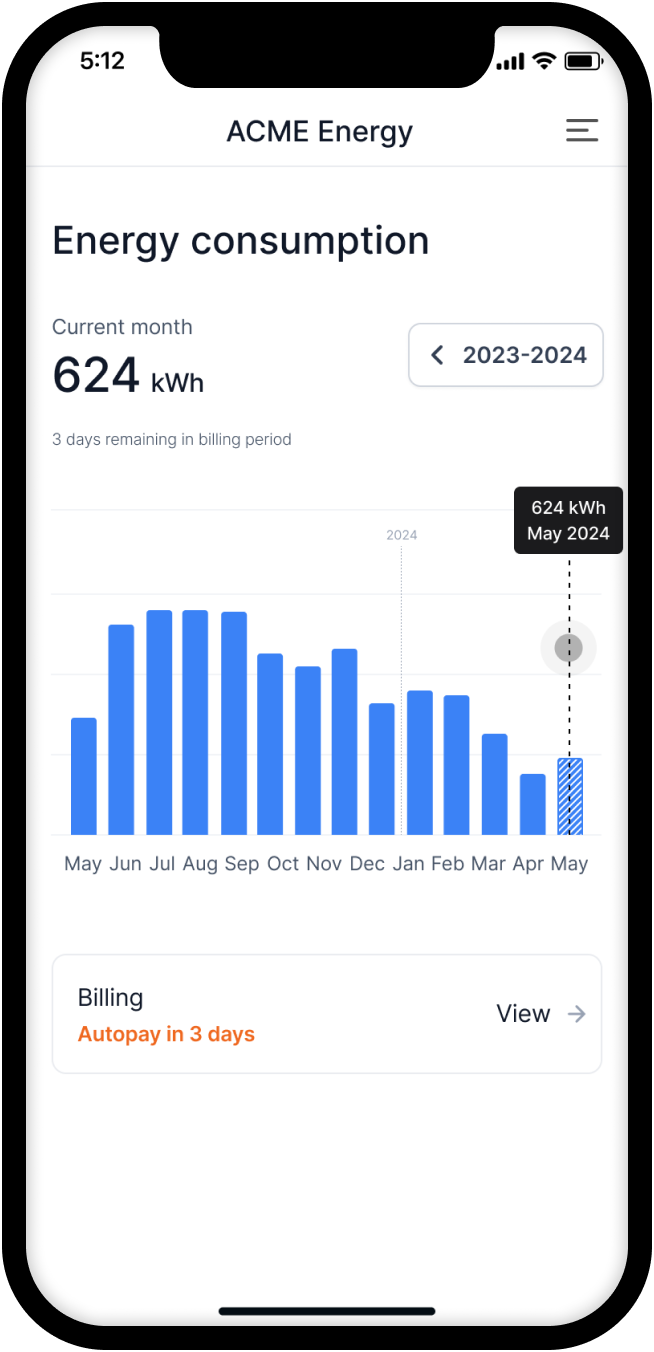Energy usage
Intro
Helping track customer's energy usage can help them understand their bills and project future usage. Only AccountToken authentication is needed to access usage information.
API
Our usage API endpoints differ based on the time interval you want to receive usage data. The API requires AccountToken (refer to the authentication docs for more details).
Depending on the customer's utility, we may be able to access up to two years of historical data for a single customer. The usage data often lags by a day or two.

The usage data returned by these APIs are estimated for analyzing usage and information, but may not align exactly to the meter readings. This is due to multiple factors including that the meter read happens and different times of the day than the interval boundaries.
All of these APIs provide both import and export usage data. Import refers to energy consumed from the grid, while export refers to energy sent back to the grid (in the case of solar panels or battery storage).
Get monthly usage
This endpoint returns an entire year of usage separated by month. In addition, it provides links to the previous and next year of usage if applicable. For this interval, use the GET /v1/account/locations/{location_uuid}/usage/monthly API.
Get daily usage
This endpoint returns an entire month of usage separated by day. In addition, it provides links to the previous and next month of usage if applicable. For this interval, use the GET /v1/account/locations/{location_uuid}/usage/daily API.
Get 15-minute interval usage
This endpoint returns an entire month of usage separated by 15-minute intervals. In addition, it provides links to the previous and next month of usage if applicable. For this interval, use the GET /v1/account/locations/{location_uuid}/usage/intervals API.
Most days have 96 intervals (four 15-minute intervals per hour for a 24 hour day). However, for locations participating in daylight savings time, this could be 92 intervals (spring forward) or 100 intervals (fall back) on some days.
We receive this data one day at a time, so there will never be a partial day represented.